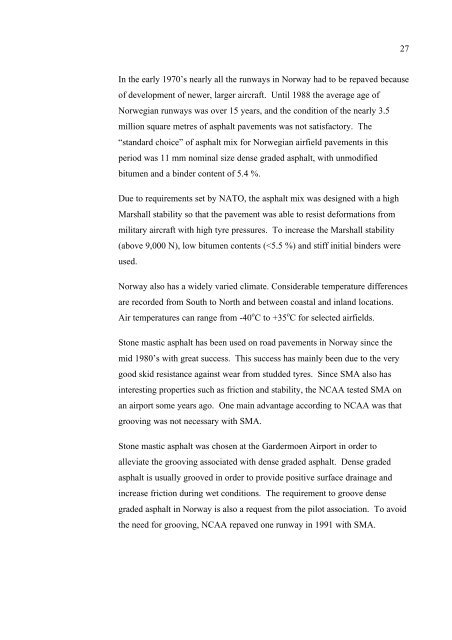Use of Stone Mastic Asphalt on Airport Pavements - aaptp
Use of Stone Mastic Asphalt on Airport Pavements - aaptp
Use of Stone Mastic Asphalt on Airport Pavements - aaptp
You also want an ePaper? Increase the reach of your titles
YUMPU automatically turns print PDFs into web optimized ePapers that Google loves.
In the early 1970’s nearly all the runways in Norway had to be repaved because<br />
<str<strong>on</strong>g>of</str<strong>on</strong>g> development <str<strong>on</strong>g>of</str<strong>on</strong>g> newer, larger aircraft. Until 1988 the average age <str<strong>on</strong>g>of</str<strong>on</strong>g><br />
Norwegian runways was over 15 years, and the c<strong>on</strong>diti<strong>on</strong> <str<strong>on</strong>g>of</str<strong>on</strong>g> the nearly 3.5<br />
milli<strong>on</strong> square metres <str<strong>on</strong>g>of</str<strong>on</strong>g> asphalt pavements was not satisfactory. The<br />
“standard choice” <str<strong>on</strong>g>of</str<strong>on</strong>g> asphalt mix for Norwegian airfield pavements in this<br />
period was 11 mm nominal size dense graded asphalt, with unmodified<br />
bitumen and a binder c<strong>on</strong>tent <str<strong>on</strong>g>of</str<strong>on</strong>g> 5.4 %.<br />
Due to requirements set by NATO, the asphalt mix was designed with a high<br />
Marshall stability so that the pavement was able to resist deformati<strong>on</strong>s from<br />
military aircraft with high tyre pressures. To increase the Marshall stability<br />
(above 9,000 N), low bitumen c<strong>on</strong>tents (


